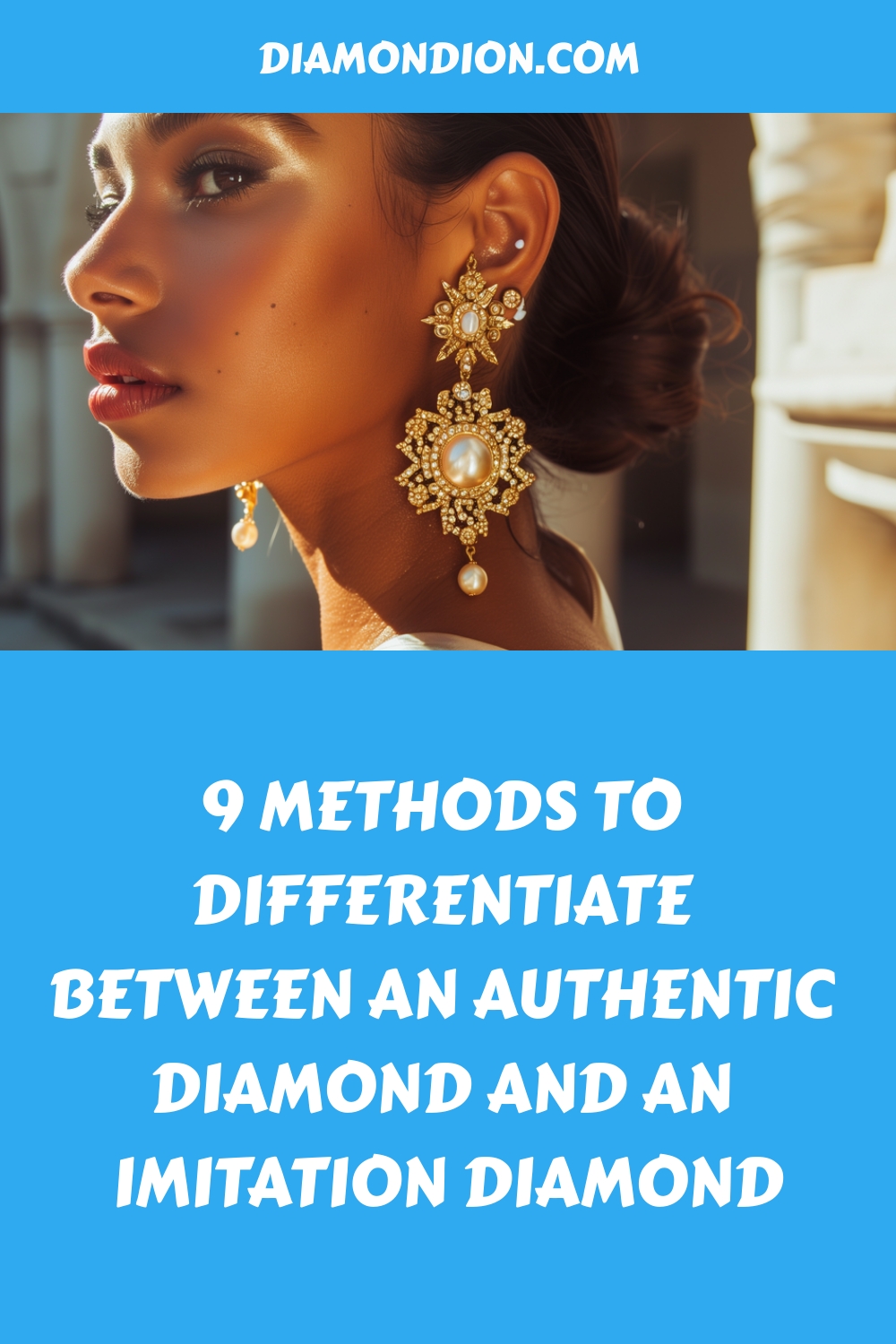Article Contents
In the realm of precious stones, knowing how to differentiate an authentic diamond from an imitation is both an artistic skill and a scientific process. Whether you are a collector, thinking about popping the question, or simply curious, understanding the process to confirm if a diamond is real can be very beneficial.
With a market full of convincing imitations, it’s crucial to know the tests that can help you identify an authentic diamond. From basic visual inspection to advanced scientific techniques, each method sheds light on the true nature of the diamond.
Join us on this journey of discovery, as we reveal the secrets that distinguish authentic diamonds from cleverly crafted fakes.
Key Insights on Identifying Counterfeit Diamonds
- The water test evaluates if a diamond sinks quickly because of its high density.
- Observing under a loupe with 10X magnification can show natural flaws.
- Authentic diamonds have a distinct glow and sparkle, which can be measured with special equipment.
- A professional evaluation provides precise verification of a diamond’s legitimacy.
1) Water Test:
A genuine diamond will drop to the bottom of a glass of water due to its density, while imitations might float or descend more gradually.
2) Fog Test:
Breathing on a diamond and watching how fast the fog vanishes can reveal its heat conductivity. Real diamonds dissipate fog rapidly, while imitations might hold onto the fog.
3) Loupe Inspection:
Looking closely at a diamond with 10X magnification in a loupe lets you see its natural blemishes and flaws. Imitations might appear too perfect.
4) Weight Check:
Comparing the weight of a diamond with established densities can aid in determining if it’s real. For instance, cubic zirconia weighs more than a real diamond.
5) Heat Test:
Genuine diamonds can endure heat without harm, while imitations may fracture or alter color when subjected to intense heat.
6) UV Light Examination:
Authentic diamonds might show blue fluorescence when exposed to UV light, whereas imitations might not fluoresce or may display various colors.
7) Sparkle Analysis:
Legitimate diamonds exhibit exceptional shine and prismatic colors, which can be detailed with instruments like the Brilliance Scope.
8) Setting and Mount Verification:
Inspecting the metal quality and craftsmanship of the setting can offer hints regarding a diamond’s genuineness. Superior materials and meticulous construction suggest a real diamond. Inspecting the metal quality and craftsmanship of the [setting can offer hints regarding a diamond’s](https://www.yourdictionary.com/example) genuineness. Superior materials and meticulous construction suggest a real diamond. Additionally, uneven prongs, poor soldering, or dull metal finishes may signal a fake or low-quality piece. To truly understand how to buy genuine jewellery, it is essential to examine the setting alongside the diamond for any discrepancies. Consulting with an expert jeweler can also provide valuable insights and ensure you’re making an informed purchase.
9) Expert Consultation:
Consulting with a diamond specialist can offer an in-depth verification using expert tools and extensive knowledge.
Now You Will Always Choose an Authentic Diamond!
You can confidently identify real diamonds from fakes by performing these examinations and consulting with professionals. Keep in mind that certificates from recognized diamond grading labs are also solid proof of authenticity. When examining a diamond, look for its reflection, a real diamond will reflect gray in color. You can also use the sandpaper test, as a real diamond is so hard that it can scratch glass, unlike a fake. Knowing how to spot real diamonds can save you from being scammed by counterfeit sellers who try to pass off imitations as genuine. Consulting with a professional and obtaining a certificate of authenticity are crucial steps in ensuring the legitimacy of a diamond. Another important aspect to consider when verifying diamond jewellery authenticity is to ensure that the piece is accompanied by a reputable grading report. This report provides detailed information on the diamond’s characteristics, including cut, clarity, color, and carat weight, which can help confirm its authenticity. Additionally, seeking the expertise of a qualified gemologist can provide further assurance that the diamond is real and of high quality.
All Diamond presents an exquisite selection of high-quality diamond jewellery with assurances of lifetime craftsmanship and UK hallmarks. Explore their offerings and count on their esteemed reputation for delivering authentic, natural diamonds.



